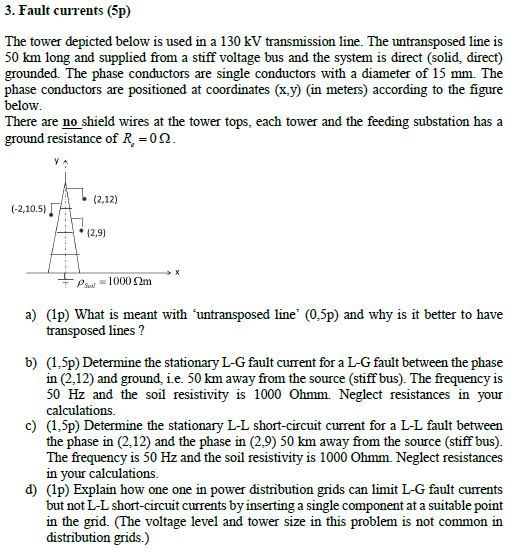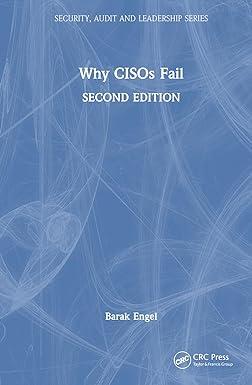
3. Fault currents (5p) The tower depicted below is used in a 130 kV transmission line. The untransposed line is 50 km long and supplied from a stiff voltage bus and the system is direct (solid, direct) grounded. The phase conductors are single conductors with a diameter of 15 mm. The phase conductors are positioned at coordinates (x,y) (in meters) according to the figure below. There are no shield wires at the tower tops, each tower and the feeding substation has a ground resistance of R=09 (2.12) (-2, 10.5) 12,9) PS 1000 m a) (10) What is meant with untransposed line' (0.5p) and why is it better to have transposed lines? b) (1.5p) Determine the stationary L-G fault current for a L-G fault between the phase in (2012) and ground, i.e. 50 km away from the source (stiff bus). The frequency is 50 Hz and the soil resistivity is 1000 Ohmm. Neglect resistances in your calculations. c) (1,5p) Determine the stationary L-L short-circuit current for a L-L fault between the phase in (2.12) and the phase in (2.9) 50 km away from the source (stiff bus). The frequency is 50 Hz and the soil resistivity is 1000 Ohmm Neglect resistances in your calculations. d) (1p) Explain how one one in power distribution grids can limit L-G fault currents but not L-L short-circuit currents by inserting a single component at a suitable point in the grid. (The voltage level and tower size in this problem is not common in distribution grids.) 3. Fault currents (5p) The tower depicted below is used in a 130 kV transmission line. The untransposed line is 50 km long and supplied from a stiff voltage bus and the system is direct (solid, direct) grounded. The phase conductors are single conductors with a diameter of 15 mm. The phase conductors are positioned at coordinates (x,y) (in meters) according to the figure below. There are no shield wires at the tower tops, each tower and the feeding substation has a ground resistance of R=09 (2.12) (-2, 10.5) 12,9) PS 1000 m a) (10) What is meant with untransposed line' (0.5p) and why is it better to have transposed lines? b) (1.5p) Determine the stationary L-G fault current for a L-G fault between the phase in (2012) and ground, i.e. 50 km away from the source (stiff bus). The frequency is 50 Hz and the soil resistivity is 1000 Ohmm. Neglect resistances in your calculations. c) (1,5p) Determine the stationary L-L short-circuit current for a L-L fault between the phase in (2.12) and the phase in (2.9) 50 km away from the source (stiff bus). The frequency is 50 Hz and the soil resistivity is 1000 Ohmm Neglect resistances in your calculations. d) (1p) Explain how one one in power distribution grids can limit L-G fault currents but not L-L short-circuit currents by inserting a single component at a suitable point in the grid. (The voltage level and tower size in this problem is not common in distribution grids.)







